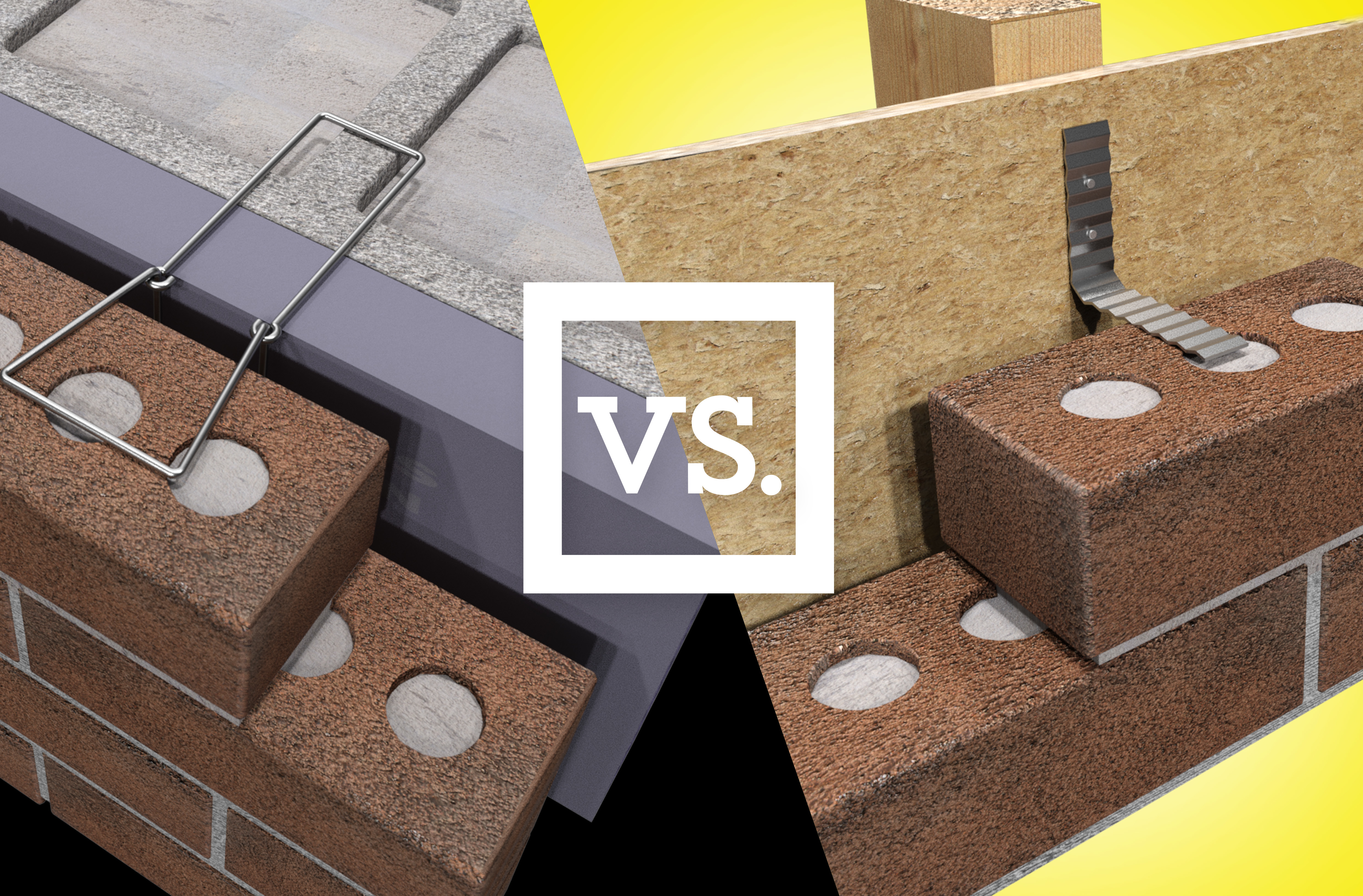What’s the difference between solid masonry and brick veneer?
Solid Brick vs Brick Veneer
There are two ways to build a brick building: solid masonry and brick veneer. Is one better than the other? If so, why?
Solid Masonry
Solid masonry is the good old-fashioned brick construction that was quite common up until the mid-1900s. This is also known as ‘double brick,’ ‘solid brick,’ or ‘brick and block’ construction. This form of masonry construction uses several layers (wythes) of brick with header bricks to hold them together. Some solid masonry walls built before 1900 were over 20” thick! Because the inner wythe can’t be seen from the outside it was commonly substituted with concrete or cinder block. Sometimes metal ties were incorporated into solid masonry walls. Unfortunately, older solid walls with these ties didn’t use hot-dip or stainless steel ties so most of those original ties have rusted away.
Solid masonry was undeniably a solid way to build. With an 8 inch or greater wall thickness, they were
able to support a wide variety of different roof structures. Carpenters often worked together to build the floor joists into the walls at the same time the brick was going up.
This figure below shows some of the common types of solid masonry walls.

Brick Veneer (Cavity Wall)
The biggest difference between brick veneer and solid brick is the main building support. Solid masonry is the structural support of the building. With brick veneer, the structural support comes from the concrete, steel, or wood that makes up the backup wall, and the brick is on the exterior for aesthetic purposes. The brick veneer is only one wythe, as opposed to a solid masonry building which would consist of several wythes. There is an open cavity between the brick and the backup wall which allows for the addition of insulation and mortar collection material. Brick veneer walls must be designed with proper flashing and weep devices that allow water to exit the cavity to the exterior of the building. Cavity walls can be found in ancient construction and were brought back into use in Great Britain in the late 1800s but did not really gain popularity until the mid-1900s.
Differences between Solid Masonry and Brick Veneer Masonry
Energy Efficiency: A substantial difference between brick veneer and solid brick is the level of thermal transfer. Brick, by its inherent thermal properties, is not an effective insulator. With veneer cavity walls, there is room between the exterior veneer and the backup wall to add separate insulation material. Brick veneer walls are more energy efficient.
Water Drainage: Brick is not a waterproof material. Both types of masonry walls rely on the bond between mortar and masonry units to limit water penetration. Solid masonry walls rely on their large mass to absorb water that enters from the exterior. Older solid masonry wall buildings were not air-conditioned and the interior finish often used cement plaster which is not susceptible to water damage like gypsum which is used today. The lack of insulation kept the solid masonry wall warm from the interior reducing temperature fluctuations. Maintenance on older solid masonry walls is critical (tuckpointing when necessary) Cavity Walls rely on weep systems to remove the water from behind the bricks to the exterior.
Structural: Solid masonry walls are structural walls. Brick veneer walls are attached to the structural backup walls and are not structural.
Costs: Solid masonry Walls are much more expensive to make than brick veneer Cavity Walls.
Brick Veneer Backup Walls
Most residential homes are built with wood framing, while larger buildings are built with steel framing, concrete or CMU backups. Different backup materials require different masonry veneer anchors to attach the outside brick to the interior support material.
For example, corrugated sheet metal anchors can only be used with wood backups with 1 inch of airspace in between the materials. Any larger space will require sheet metal anchors. Adjustable anchors, on the other hand, can be effective in wood, steel, masonry, or concrete backups. Concrete and Steel Stud backups must use adjustable anchors due to the potential for deflection issues.
Restoration of Solid Masonry Walls
If solid masonry walls are not properly maintained moisture will get behind the bricks and they will begin to pop out and fall off. In many cases, Spiral Remedial Ties act like a screw and can literally screw the wall back into place. In some cases, the exterior wythe is removed and attached with small stainless steel corrugated veneer anchors about 2” long expansion anchored into the brick behind. In other cases, a brick veneer is added to the exterior of the existing solid masonry wall by adding flashing and insulation to the exterior solid masonry, adding airspace and building a new brick veneer with proper moisture weeps and mortar drop materials.
Not every brick building is made equally. Building with the highest quality of masonry products will ensure longevity in every project. Heckmann Building Products has the right anchors and masonry accessories for every project.


